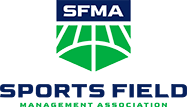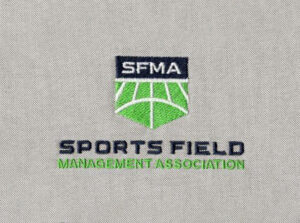Sports Field Management 101 – Online Certificate Course
This free self-paced training provides continuing education opportunities for anyone who has not been formally educated in turfgrass science and is interested in entering the industry. Completing the course will build a solid foundation in the science and practices of turfgrass management so students can successfully care for a turfgrass surface and be prepared to enter a position in sports field management. Those who complete the course can be hired for seasonal and crew assistance at sports facilities.
Upon successfully completing this course, participants will receive a Certificate of Completion that can be printed out to show a potential employer.
This course is not restricted to students and may also be used as a training tool for current sports field crew members. Although the course is free, those pursuing it must be an SFMA member or join as an SFMA student member ($30) to participate. If you are interested or know of someone, please FILL OUT THIS FORM. For more information, contact Jennifer McLendon, Education Manager, at jmclendon@sportsfieldmanagement.org.
ACCESS THE ONLINE CURRICULUM
Turfgrass Science Curriculum – For Secondary Agriculture Education Classrooms
SFMA’s Turfgrass Science Curriculum was developed to provide agriculture educators with lessons to introduce secondary students to the turfgrass industry. Turfgrass is vitally important to the economy, the environment, and to the communities where we live. Help students become aware of the turfgrass science field and give them an appreciation of the science and skills necessary to care for a turfgrass surface. The curriculum can provide a foundation for students pursuing a college degree in the green industry, or it can help them in their everyday life to manage a home lawn, or as a volunteer to help care for parks or community recreation areas.
Curriculum Goals:
- Build a solid foundation in the science and practices of turfgrass management so secondary students can successfully care for a turfgrass surface.
- Introduce students to community, environmental, and economic benefits of turfgrass.
- Introduce students to career opportunities in the turfgrass industry.
- Provide a competitive edge to students interested in pursuing higher education in the turfgrass industry
- Provide a comprehensive curriculum that can be easily implemented in secondary agriculture education classrooms regardless of teacher experience and background.
- Meet the needs of students and requirements set forth by Pennsylvania Department of Education. Can easily be adjusted to meet the requirements of state Departments of Education
A comprehensive curriculum is available in 5 Units:
- Introduction to Turfgrass Science
- Turfgrass Growth & Development, Anatomy, and Identification
- Turfgrass Soils
- Turfgrass Cultural Practices
- Turfgrass Establishment
Each unit includes complete lesson plans, PowerPoint presentations, worksheets, individual and class projects, quizzes, and hands-on learning labs (indoor and outdoor). The curriculum was developed to provide agriculture educators with lessons that could supplement any secondary plant science curriculum. The units can be used to enhance the plant science curriculum or replace other units in the plant science curriculum. The units should be used as a whole in the order they are presented to provide the most benefit to learners.
Purchase the Classroom Curriculum
SFMA Member – $82
Nonmember – $207
Visit the SFMA Store to purchase.
Resources to Help You Implement the Turfgrass Science Curriculum in Your Classroom
Penn State University’s Turfgrass Science Department faculty have put together a collection of videos to help you teach turfgrass science. For more detailed information about each unit, please use the Curriculum Overview. Access videos by unit and lesson for teaching tips:
Turfgrass Science Curriculum Introduction
Unit 2 – Turfgrass Growth and Development, Anatomy, & ID
Unit 3 – Turfgrass Soils
Unit 4 – Cultural Practices


